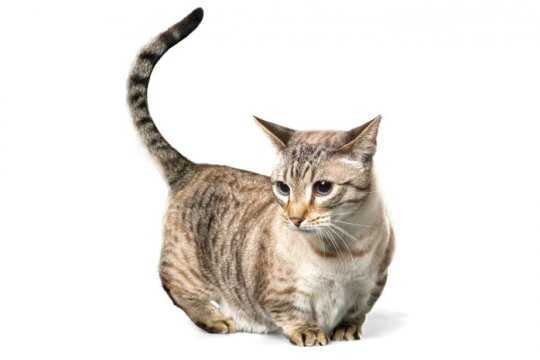Munchkin

Origin
United States
Height
6"-9"
Adult Weight
4-9 pounds
Life Span
12-15 years
TEMPERAMENT
Sweet, friendly, curious, playful
OTHER NAMES
Kangaroo cat, Magpie, Sausage cat
Group
Small short-haired and long-haired
Price
$1,000-$2,000
Personality and Temperament
Care
- NUTRITION
- GROOMING
- EXERCISE
- HEALTH
Characteristics
History
The Breed Standard
Body
The Munchkin cat is a small to medium-sized breed that matures to an average weight of 5 to 9 pounds. Females are usually smaller than males.
Head
The head should be a modified wedge shape with rounded contours, and should be of a size that is proportionate to the cat's body.
Eyes
The eyes should be walnut shaped and should be wide enough apart to provide an open, alert expression. Eyes may be of any color.
Ears
A Munchkin cat's ears should be proportionate to the head, with broader bases and slightly rounded tips. Longhair Munchkin cats may display lynx tips.
Legs & Paws
A Munchkin cat's legs should be short, and should be set evenly apart, with the upper and lower forelegs being of equal length. The back legs may be of the same length as the front legs, although longer back legs and shorter front legs are acceptable. The paws should be round and compact. Feet should be pointed straightforward, not pronated inward or outward.
Tail
The tail should be of medium length – about the same length as the cat's body. It should taper and have a rounded end.
Coat
Shorthaired Munchkins have plush, soft coats. Long-haired Munchkin cats typically display very soft, silky coats.
Color
Munchkin cats may be of any color and pattern imaginable. Solid colors, tabbies, harlequins, and pointed varieties are a few examples.
Frequently Asked Questions
-
How much does a Munchkin cat cost?
How much does a Munchkin cat cost?Munchkin cats cost between $1,000-$2,000. -
How big do Munchkin cats get?
How big do Munchkin cats get?Munchkin cats tend to be small in size. A fully grown Munchkin cat might weigh between 4-9 pounds or more and range in height anywhere from about 6"-9" inches tall. -
How long do Munchkin cats live?
How long do Munchkin cats live?The Average lifespan for Munchkin is 12-15 years. -
Do Munchkin cats shed?
Do Munchkin cats shed?Munchkin are long-haired cats, so you do have to expect a certain amount of shedding from this breed, but they don't shed as much as other cat breeds.